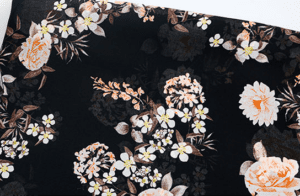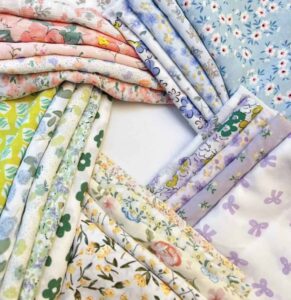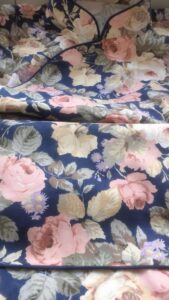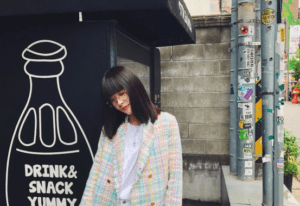Roller printing
The process of printing on fabric with a copper roller engraved with a concave pattern, also known as copper roller printing. The engraved roller is referred to as the cylinder. When printing, first make the surface of the cylinder stained with colour paste, and then use a sharp and flat scraper to scrape the surface of the cylinder without engraving part of the colour paste, so that the concave pattern left within the colour paste. When the cylinder is embossed on the fabric, the colour paste is transferred to the fabric and the pattern is printed. Each cylinder is printed with a colour paste, so if there are several cylinders on the printing equipment at the same time, the colour pattern can be printed continuously.
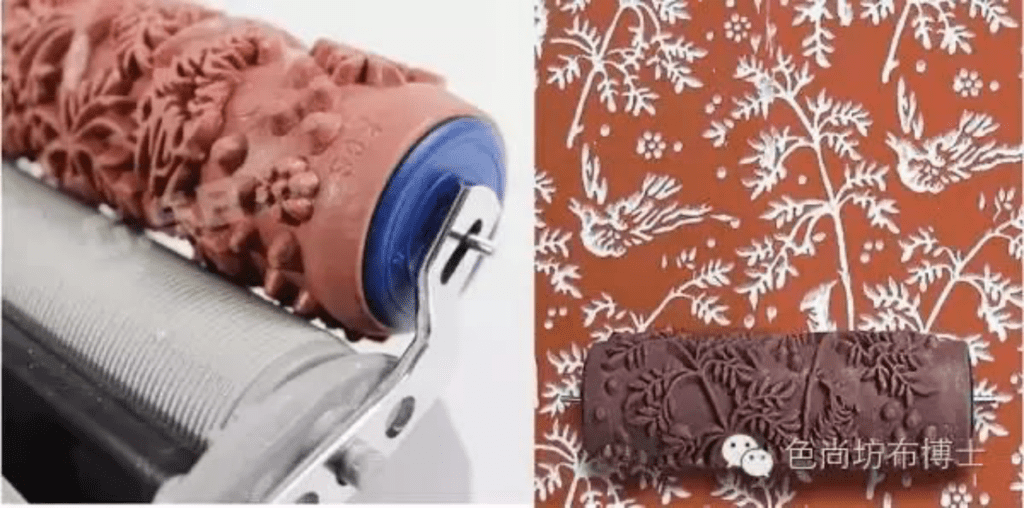
Digital printing
Digital printing, the use of digital technology for printing. Through scanning, digital phase surface, image or computer production processing of various digital patterns into the calculator, and then through the computer colour separation printing system processing, there is a special RIP software through its printing system between various printing special dyes (reactive, disperse, selective Zhu coating) directly printed on a variety of fabrics or other media, after processing processing, in a variety of textile fabrics to obtain the required variety of High precision printing products.
Digital printing process can be subdivided into the following categories
I. Classification by printing method
Digital printing is a generic term for inkjet printing technology, in order to more clearly explain the various printing methods and features, this article on the textile fabric digital printing for all-round, various types and process decomposition introduction.
1. Digital direct-jet printing
Digital direct spray printing method for disperse, acid dyes, coatings, reactive ink, digital direct spray printing method is directly on the sizing of semi-finished textile products for direct spray printing process, the process is: according to the textile selection of the corresponding ink, design patterns, sizing, and then to the textile direct spray printing machine for direct printing, and then drying, steaming, washing, drying, plus soft fixing process (which paint can be fixed with just a little baking)

2. Heat transfer printing method
Thermal transfer printing is the printing of textile dyes onto paper (coated) and then using thermal transfer printing machinery to transfer the pattern on the paper to the textile. The advantage is that the accuracy is relatively high, but the printing efficiency is low, and can only be done in full polyester or high polyester textiles, of which the transfer fabrics are semi-finished and have not been softened (adding softeners may affect the colouring rate).
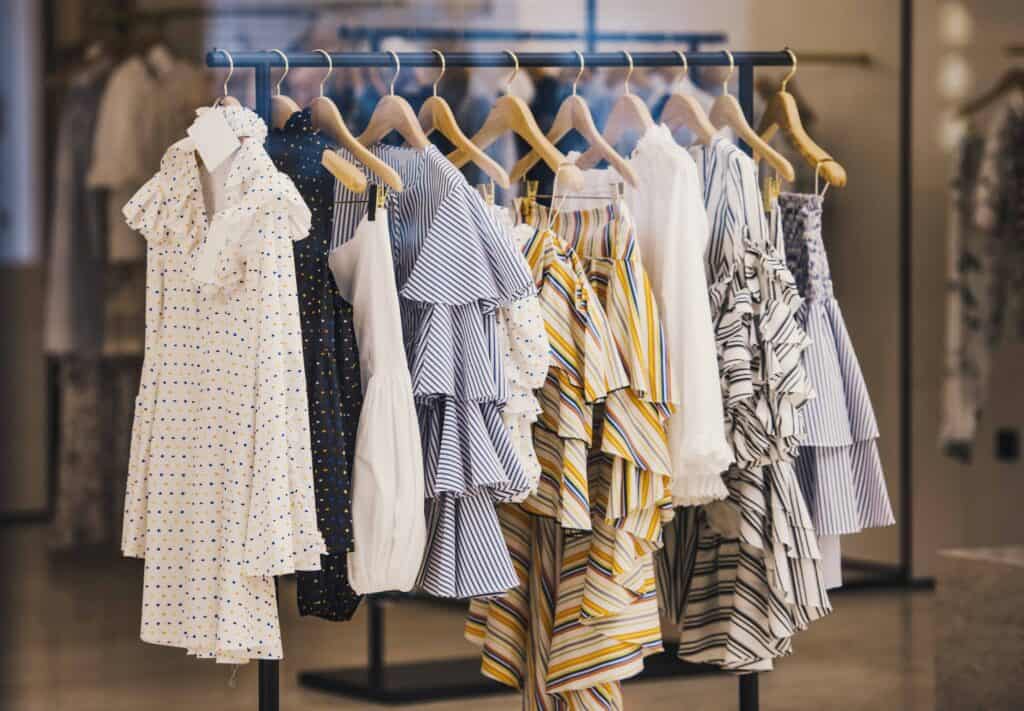
3. Cold transfer method
As with thermal transfer, textile dyes are printed on paper, then the paper and fabric are embossed with special machinery to transfer the pattern.
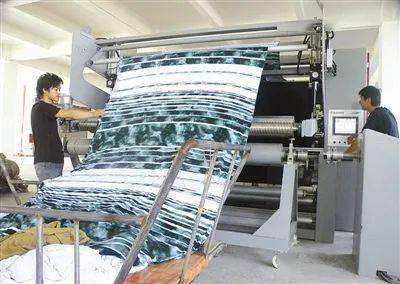
There are two ways to treat the fabric after embossing
1.carry out the traditional treatment of steaming, washing and fixing by traditional processes.
2.carry out a cold stack chemical reaction treatment to fix the colour (the fabric needs to be treated chemically in advance). Using reactive, disperse and acid dyestuff inks, this process is applicable to fabrics other than blends.
II. By dye and process
1. Disperse digital printing
At present, more than 50% of the ink used for printing in China is disperse dyestuff ink, used for polyester and other chemical fabrics printing; disperse dyestuff is a class of water solubility is very low, dyeing with the role of dispersants in the water with tiny particles in a highly dispersed state of non-ionic dyes.
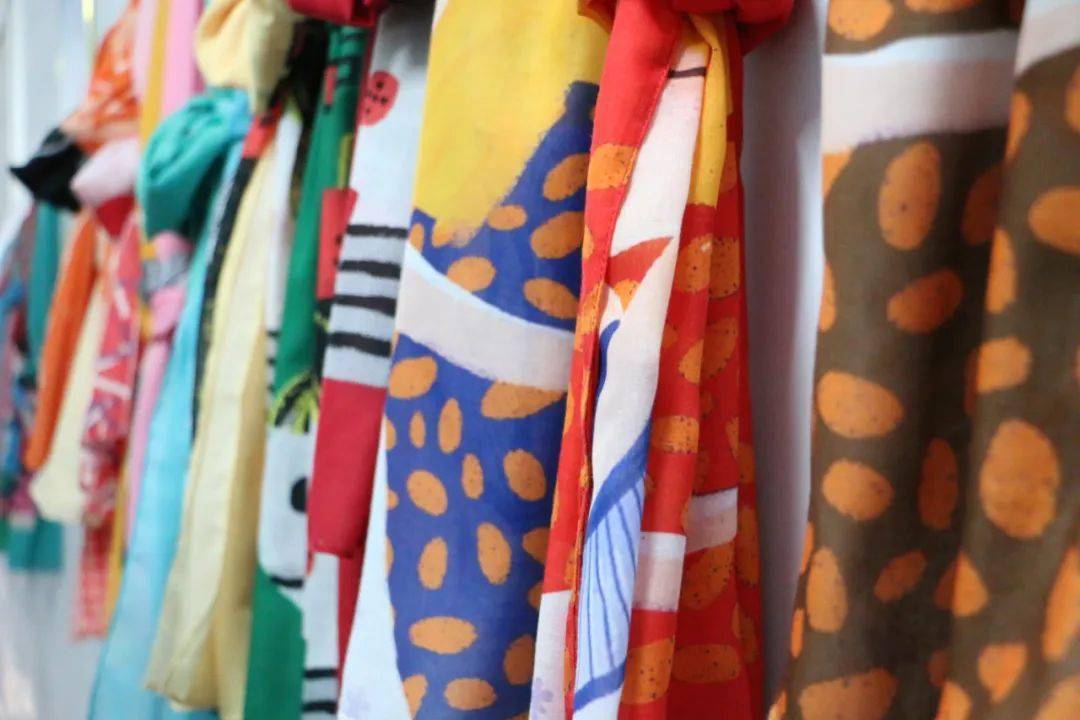
2. Reactive digital printing
Reactive dyestuff ink accounts for about 29%, mainly used for silk and cotton fabric printing; reactive dyestuff, also known as reactive dyestuff. For dyeing with the fibres in the chemical reaction of a class of dyes. These dyes contain genes that can react chemically with fibres in the sub-colour. When dyeing, the dyes react with the fibres and a covalent bond is formed between the two, making them whole and making them resistant to washing and rubbing fastness. The reactive fuel molecule consists of two main components, the parent dye and the reactive group, the group that can react with the fibre is called the reactive group. Currently it is mainly used in woven and knitted fabrics such as cotton, linen and silk or fabrics with a high content of the above.

3. Acid digital printing
Acid dyestuff ink has a small proportion, about 7%, and is used for printing on wool, nylon and other fabrics. Acid dyes are a class of water-soluble dyes with acidic groups in their structure and are dyed in acidic media. Most acid dyes contain the sodium salt of sulphonic acid, which is soluble in water and has a bright colour and full chromatography. They are mainly used for dyeing wool, silk and nylon, but can also be used for leather, paper and ink. No colouring power for cellulose fibres in general.

4. Pigment ink digital printing
China’s use of pigment ink is relatively small, less than 2%, mostly foreign products, manufacturers such as Huntsman, BASF, DuPont, Klein and other companies.

III. Classification by fabric composition
1. cotton-based digital printing, but hemp, silk, etc. can also be used with reactive dye ink.
2. digital printing with chemical fibres mainly, produced with disperse heat sublimation dye ink and chemical fibres disperse direct spray digital.
3. to T / C and some other mixed fabrics, can not use reactive, disperse, acid dyestuff ink single for the operation of the fabric, with paint ink printing.
- digital printing with nylon and wool, etc., produced with acid dye ink, silk can also be
Rotary Screen Printing
Screen printing is a method of printing that uses a squeegee to make the colour paste inside the screen under pressure to print onto the fabric. There are several important aspects of circular screen printing that differ from other screen printing methods. Screen printing, like roller printing, is a continuous process in which the printed fabric is conveyed through a wide rubber belt under a circular screen cylinder in constant motion. Screen printing is the fastest of the screen printing methods, with production speeds greater than 3,500 yards per hour. A seamless perforated metal or plastic mesh is used. The largest circular screens have a circumference greater than 40 inches and therefore the largest flower return size is also greater than 40 inches. Screen printers with more than 20 colour sets have also been produced and this printing method is slowly replacing roller printing.

Flat screen printing
The printing mould is a polyester or nylon screen (pattern) fixed on a square frame with a hollow pattern. The patterned areas of the plate can pass through the colour paste, while the non-patterned areas are closed with a polymer film layer. When printing, the plate is pressed against the fabric and the plate is filled with colour paste, which is scraped back and forth with a squeegee, so that the colour paste reaches the surface of the fabric through the pattern. Flat screen printing production efficiency is low, but adaptable, flexible application, suitable for small quantities of multi-variety production.

Water paste printing
The so-called water slurry, is a water-based slurry, printed on clothes feel is not strong, coverage is not strong, only suitable for printing on light-coloured fabrics Price is relatively flat, is a lower-grade printing types. But it also has an advantage, because it is less likely to affect the original texture of the fabric (less impact), so it is more suitable for printing patterns on large areas. Water-based printing pastes, which dissolve in water, and the paste itself is relatively thin. When printing, the printing paste is evenly leaked through the mesh of the screen printing plate to the part that needs to be printed, so that the pattern can be printed onto the T-shirt.

Gum paste printing
The basic process is the same as water paste printing, but the material used is the gel paste pigment that will solidify on the fabric after drying, a little like a piece of ointment against the skin. Currently the most common printed T-shirt on the market more than the use of gum paste printing.

Flocking printing
Flocking is a rather demanding process, only a very few factories can do it well now, and almost no factories in general have this process. Flocking is also called toothbrush flower, the effect of the finished product is like a vertical toothbrush whiskers and so named, the height of the finished product can reach about 0.3CM, you can do other colours on it, so it is also called flocking.

Pigment print
also known as paint printing, because the pigment is non-water-soluble colouring matter, no affinity for fibres, its colouring must be able to form a film of polymer compounds (adhesives) coating and adhesion to fibres to achieve. Pigment printing can be used in the processing of any fibre textile, and is superior in the printing of blends and interweaves, with a simple process, a wide range of colours and a clear outline of the flower shape, but with a poor feel and low friction fastness.

Dye out print
(wash out colours) (plucking dye) discharge print (plucking dye print) The ground colour is dyed with a dye that is not resistant to plucking agents, dried, and then printed with a dye containing plucking agents or a fancy dye containing plucking agents at the same time. It is also known as white plucking or colour plucking. It can be used to make it look as if the clothes have been washed? The colour of the clothes seems to have been washed off a lot, patchy ~ ~ in fact this is pluck printing, pluck printing principle is the fabric tissue fibres of the colour plucked off, so that it becomes another lighter colour, strong like the wash effect, is a cooler kind of printing for men’s wear !




















